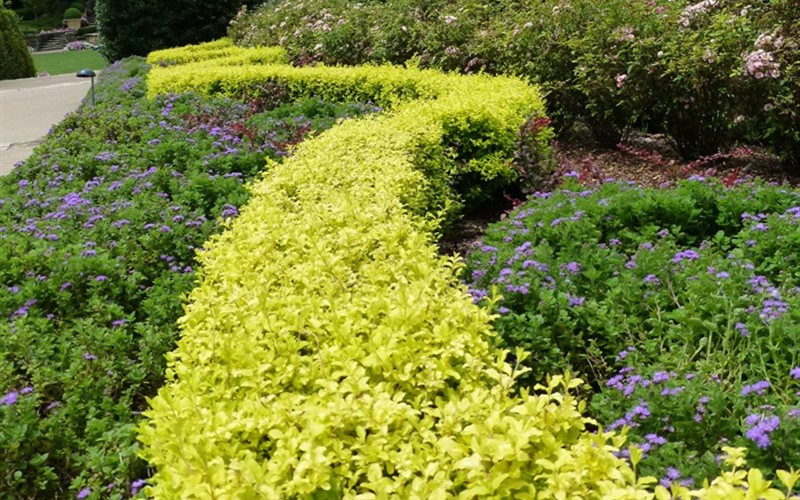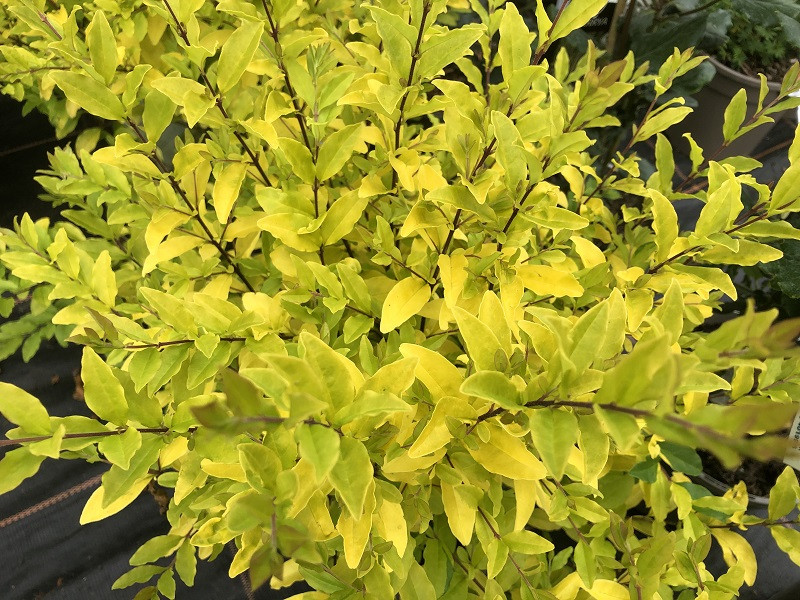Reasons Ligustrum Sinense Is The Best Shrub For Your Garden
Title: Reasons Ligustrum Sinense Is the Best Shrub for Your Garden
Introduction:
Ligustrum sinense, commonly known as Chinese privet, is a versatile shrub that can be used in a variety of landscape settings. It is known for its fast growth, dense foliage, and tolerance of a wide range of conditions. These qualities make it an excellent choice for privacy screens, hedges, and foundation plantings.
In addition to its practical benefits, Chinese privet is also a beautiful plant. Its glossy, dark green leaves provide year-round interest, and it can be trained to create a variety of shapes and forms. If you are looking for a low-maintenance shrub that can add beauty and function to your garden, Chinese privet is a great option.
Main Content:
Here are some of the reasons why Ligustrum sinense is the best shrub for your garden:
- Fast growth: Chinese privet is a fast-growing shrub, so it can quickly provide privacy or screening. It can grow up to 3 feet per year in ideal conditions.
- Dense foliage: Chinese privet has dense foliage, which makes it an effective screen or hedge. It can also be used to create a natural barrier between different areas of your garden.
- Tolerance of a wide range of conditions: Chinese privet is tolerant of a wide range of conditions, including full sun, partial shade, and a variety of soil types. It is also drought-tolerant and salt-tolerant, making it a good choice for gardens in hot, dry climates or coastal areas.
- Low maintenance: Chinese privet is a low-maintenance shrub. Once it is established, it requires little watering or fertilizer. It is also resistant to pests and diseases, so you will not have to spend a lot of time treating it for problems.
- Beautiful foliage: Chinese privet has glossy, dark green leaves that provide year-round interest. In the fall, the leaves may turn yellow or orange, adding even more color to your garden.
- Versatile: Chinese privet can be used in a variety of landscape settings. It is a good choice for privacy screens, hedges, foundation plantings, and more. It can also be trained to create topiary shapes or espaliered against a wall.
Conclusion:
Ligustrum sinense is a versatile and easy-care shrub that can add beauty and function to any garden. If you are looking for a plant that can quickly provide privacy, screening, or a natural barrier, Chinese privet is a great option. It is also a good choice for gardens in hot, dry climates or coastal areas. With its glossy, dark green leaves and year-round interest, Chinese privet is a beautiful addition to any landscape.
Ligustrum sinense, also known as Chinese privet, is a deciduous shrub that can grow up to 2–7 meters tall. It is native to China, Taiwan, and Vietnam, but has been naturalized in many other parts of the world, including the United States. Chinese privet is a fast-growing plant that is known for its dense foliage and attractive white flowers. However, it is also considered to be an invasive species in some areas, and its berries are poisonous to humans and animals.
If you are interested in learning more about ligustrum sinense, please visit Home Gardening. This website provides detailed information about the plant's taxonomy, morphology, ecology, and uses. You can also find information about the plant's invasive status in different parts of the world, as well as tips on how to control it.
FAQ of ligustrum sinense
- What is Ligustrum sinense?
Ligustrum sinense is a species of privet native to China, Taiwan, and Vietnam. It is an evergreen shrub or small tree that can grow up to 13 feet tall. It has glossy, dark green leaves and clusters of small, white flowers in spring. The berries are black and poisonous.
- Is Ligustrum sinense invasive?
Yes, Ligustrum sinense is considered an invasive species in some parts of the world, including the southeastern United States. It can form dense thickets that crowd out native plants and make it difficult for wildlife to move through.
- How do I control Ligustrum sinense?
There are a number of ways to control Ligustrum sinense, including:
* Physical removal: This can be done by digging up the plants or cutting them down. Be sure to dispose of the plants properly, as they can resprout from even small pieces of root.
* Chemical control: There are a number of herbicides that can be used to kill Ligustrum sinense. Be sure to follow the label instructions carefully when using herbicides.
* Biological control: There are a number of insects and diseases that can be used to control Ligustrum sinense. However, biological control methods can be slow-acting, so they may not be suitable for all situations.
- Is Ligustrum sinense toxic?
Yes, all parts of Ligustrum sinense are poisonous, especially the berries. If ingested, the berries can cause nausea, vomiting, diarrhea, and other symptoms. In severe cases, poisoning can lead to death.
- How can I prevent Ligustrum sinense from spreading?
If you have Ligustrum sinense in your yard, there are a number of things you can do to prevent it from spreading:
* Do not allow the plant to flower or produce berries.
* Trim the plant regularly to keep it in check.
* Remove any suckers or seedlings that appear.
* Be careful not to spread the plant's pollen or seeds when you are handling it.
Image of ligustrum sinense
- Ligustrum sinense in full bloom. The flowers are small and white, and they bloom in clusters.

- Ligustrum sinense leaves. The leaves are simple, opposite, elliptic to elliptic-oblong, and 2.5-8cm long. They are dark green and have a slightly hairy underside.

- Ligustrum sinense berries. The berries are dark blue and about 0.5cm in diameter. They are poisonous to humans and animals.

- Ligustrum sinense shrub. The shrub can grow up to 6m tall, but it is more commonly seen at around 2-3m tall. It has a dense, bushy growth habit.

- Ligustrum sinense hedge. Ligustrum sinense is often used as a hedge plant because it is fast-growing and easy to maintain.

- Ligustrum sinense in a garden. Ligustrum sinense can be used as an ornamental plant in gardens. It is tolerant of a wide range of conditions, including poor soil and drought.

- Ligustrum sinense in a forest. Ligustrum sinense is native to China and Japan, but it is now naturalized in many parts of the world. It can be found growing in forests, woodlands, and hedgerows.
- Ligustrum sinense bonsai. Ligustrum sinense can be trained into bonsai trees.

- Ligustrum sinense essential oil. The essential oil of Ligustrum sinense is extracted from the leaves and flowers. It has a strong, sweet scent and is used in aromatherapy.
- Ligustrum sinense tea. The leaves of Ligustrum sinense can be used to make tea. The tea has a slightly bitter taste and is said to have health benefits.


Post a Comment for " Reasons Ligustrum Sinense Is The Best Shrub For Your Garden"